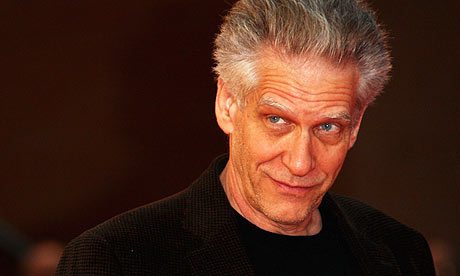
On a recent trip to Amsterdam to the EYE (national museum of film) I visited the major exhibition of director David Cronenberg’s work. One section, featuring clips and information about his film, A History of Violence, reminded me of this powerful work that I also referenced in my book, Savvy Characters Sell Screenplays! – specifically in the chapters in which I discuss subplots and plot twists.
TOM STALL In this family, we do not solve problems by hitting people!
JACK STALL No, in this family, we shoot them!
Tom slaps his teenage son, Jack.
In A History of Violence (screenplay by Josh Olson), family man and small town Indiana diner owner, Tom Stall, becomes a local yet reluctant hero after he shoots two thugs, who attempt to rob him. National news coverage of this event prompts the arrival of Fogarty and his two henchmen from Philadelphia to confront Tom.
Plot twists can be illustrated through character revelations; who they truly are and what they are capable of doing for survival, loyalty, love, and so on, or during the story when an unexpected event occurs. In the case of this film, the plot twist unfolds when it is revealed that Tom Stall is not only Joey Cusack, an ex-killer from Philadelphia—but he has kept his true identity secret for twenty-years from his wife and their two children. Hence the title A History of Violence — the underlying meaning for Tom Stall centers on his own personal history of violence.
There is nothing more satisfying to an audience when they are taken by surprise, but plot twists should be true to your story and not tacked on just for the shock element.
To read more: http://www.screenwritersutopia.com/article/af5ed45a
My latest article:
http://www.screenwritersutopia.com/article/af5ed45a
